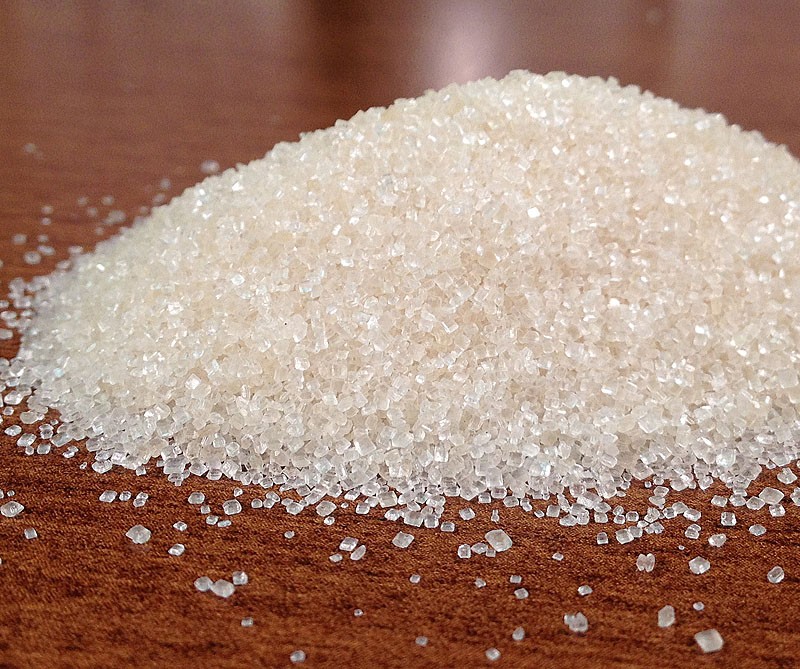Recognizing Cane Sugar Processing: A Comprehensive Overview of the Stages
Recognizing Cane Sugar Processing: A Comprehensive Overview of the Stages
Blog Article
An Extensive Guide to the Ecological Effect and Sustainability Practices in Cane Sugar Processing
The environmental impact of cane sugar processing presents a complicated array of difficulties that warrant cautious exam. From soil degradation and excessive water usage to the carbon footprint associated with cultivation and manufacturing, the effects of standard methods are far-ranging. What specific techniques can be implemented to strike an equilibrium in between productivity and environmental stewardship?
Summary of Cane Sugar Processing
Walking cane sugar handling entails a collection of organized actions that change sugarcane into refined sugar. Originally, gathered sugarcane is delivered to processing facilities, where it undergoes cleaning up to get rid of dirt and particles. Following this, the walking cane is crushed to draw out juice, which is then made clear by getting rid of impurities via home heating and the addition of lime.
The cleared up juice undertakes evaporation, where water is removed to focus the sugar material. These crystals are divided from the remaining syrup using centrifugation, resulting in raw sugar.
The last item is then dried out and packaged for circulation. Throughout this whole procedure, maintaining performance and quality assurance is vital to make certain the sugar fulfills sector standards. Each action in walking cane sugar processing not just adds to the final item however likewise has effects for resource usage and waste generation, establishing the stage for conversations on sustainability and environmental effects connected with sugar production.
Environmental Difficulties of Production
The manufacturing of cane sugar presents several substantial ecological obstacles that warrant focus. One key concern is the substantial use agrochemicals, consisting of chemicals and fertilizers, which can bring about soil deterioration, biodiversity loss, and contamination of neighborhood water resources. The overflow from sugarcane areas commonly brings these chemicals into neighboring ecological communities, interrupting marine life and influencing the health of communities reliant on these water bodies.
Another challenge is the high power intake connected with sugarcane processing. The boiling and refining phases require considerable warmth, largely produced by shedding fossil gas, adding to greenhouse gas discharges. In addition, the extensive acreage needed for sugarcane cultivation can bring about deforestation and environment destruction, additional worsening environment modification and harmful wild animals.
Moreover, the labor techniques in some regions increase ethical issues, as employees might deal with poor working problems and inadequate earnings. This scenario usually perpetuates a cycle of poverty in neighborhood neighborhoods. Cane Sugar Processing. Resolving these ecological difficulties is vital for developing extra lasting techniques in walking stick sugar manufacturing, ultimately profiting both the setting and the neighborhoods associated with this sector
Water and Land Usage Influence
Water sources and land application are critical components in the walking stick sugar market that dramatically impact the atmosphere. The growing of sugarcane calls for substantial water input, with price quotes suggesting that it can consume as much as 2,000 litres of water per kg of sugar generated. This extensive use water frequently causes exhaustion of local water resources, affecting not just the sugarcane ranches yet additionally surrounding communities and neighborhoods that count on the exact same water sources for farming and domestic use.

In addition, land use for sugarcane farming can result in deforestation and the conversion of why not try here all-natural environments right into monoculture vineyards. This practice diminishes biodiversity, disrupts neighborhood environments, and adds to dirt destruction. The growth of sugarcane fields usually trespasses on valuable farming land, developing competitors for resources between food and biofuel production.
Lasting methods, such as optimizing watering methods and implementing plant rotation, are important to alleviate these effects. By adopting a lot more efficient water usage and land administration techniques, the walking stick sugar market can reduce its ecological impact, making sure an equilibrium in between farming performance and environmental conservation.
Greenhouse Gas Emissions
Greenhouse gas emissions stand for a significant environmental problem within the cane sugar handling industry, particularly as agricultural practices increase to fulfill worldwide need. The cultivation of sugarcane, a plant that thrives in tropical environments, counts heavily on artificial fertilizers and pesticides, which add to nitrous oxide discharges. Additionally, land-use modifications, including deforestation for new sugarcane plantations, release carbon dioxide saved in plant life and dirt.
During handling, power consumption is an additional significant resource of greenhouse gas discharges - Cane Sugar Processing. Many sugar mills make use of fossil fuels to power equipment and produce warm, leading to significant carbon footprints. In addition, the transport of raw sugarcane and completed items adds layers of exhausts with fuel burning in cars
This entails evaluating present agricultural techniques, processing approaches, and transport systems to recognize locations for enhancement and reduction. Attending to greenhouse gas emissions is crucial for fostering a more lasting walking stick sugar industry in a changing climate.

Lasting Practices and Innovations
Sustainable practices and technologies are progressively vital in the cane sugar handling industry as stakeholders look for to decrease environmental effects while preserving efficiency. One substantial improvement is the implementation of integrated crop administration, which maximizes resource use by integrating soil monitoring, pest control, and plant rotation strategies. This method boosts return while reducing chemical inputs and preserving soil health.
In addition, the adoption of renewable energy sources, such as biomass from sugarcane deposits, has gained traction - Cane Sugar Processing. By converting waste items into power, refining facilities can lower their reliance on nonrenewable fuel sources, therefore reducing greenhouse gas exhausts
Water administration techniques have actually likewise seen improvements through the recycling and reusing of water in processing plants, considerably decreasing freshwater usage. Innovations in modern technology, such as accuracy farming, make it possible for farmers to check crop health and resource usage better, making sure lasting cultivation methods.
Furthermore, qualification programs like Fair Profession and Rainforest Partnership urge ecologically accountable farming techniques and promote social equity within the supply chain. By embracing these lasting techniques and developments, the walking stick sugar handling market can boost its resilience and contribute favorably to environmental stewardship.
Final Thought
The environmental impact of walking stick sugar processing presents substantial challenges, consisting of soil deterioration, high water redirected here intake, and greenhouse gas emissions, alongside moral issues related to labor techniques. Attending to these issues through sustainable methods, such as integrated crop monitoring, sustainable energy adoption, and water recycling, is vital. By promoting socially fair and ecologically liable techniques in sugar manufacturing, the industry can minimize its unfavorable effects, making certain a more lasting future for both communities and communities included in this field.
Walking stick sugar processing entails a collection of organized actions that change sugarcane into refined sugar. Each action in walking cane sugar processing not only adds to the final item however likewise has implications for resource use and waste generation, setting the stage for discussions on sustainability and environmental impacts linked with sugar manufacturing.
Greenhouse gas exhausts stand for a significant ecological problem within the walking cane sugar handling industry, specifically as farming methods increase to fulfill global need.Sustainable methods and innovations are significantly important in the walking stick sugar processing market as stakeholders seek to lower ecological effects while keeping productivity.The this post ecological effect of cane sugar processing presents considerable difficulties, consisting of soil deterioration, high water consumption, and greenhouse gas emissions, along with honest problems related to labor techniques.
Report this page